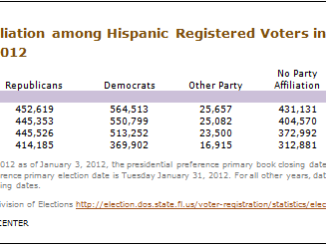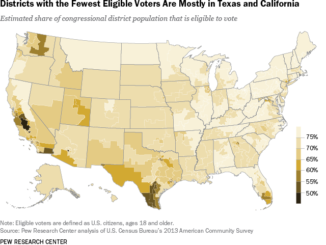
by Sol Trujillo
A startling fact: If the U.S. Latino population were an independent economy, its gross domestic product would be the fastest-growing among the world’s developed economies. U.S. Latino GDP is now $2.3 trillion, as detailed in a new report that estimates the group’s economic output by measuring their share across 71 industries. The task for U.S. policy makers is to allow this trend to continue strengthening the country at large.
Unfortunately, while economic output for Latinos has climbed steadily, the overall U.S. economy is slowing in the long term. Growth reached 2.9% last year, compared with the postwar average of 3.2%, and most economists predict the rate will decline further in coming years.
A big factor in that decline is America’s slowing labor-force growth, down from 2.3% in 2000 to 0.7% in 2017. While the official unemployment numbers look great, the share of prime-age Americans seeking jobs has decreased. The drop-off will be compounded in coming years by more older Americans retiring and a declining U.S. birthrate. If not for the Latinos, who have comprised 82% of growth in the U.S. workforce since 2008, Social Security would already be in danger of collapse.
Latinos in the U.S. are like cavalry coming over the hill to support the economy and sustain growth through coming decades. The growth of the Latino cohort is a unique advantage America has compared with other aging economies.
Latinos are America’s most youthful cohort and are growing six times as fast as the population overall, expected to exceed 100 million by midcentury. These are the people filling jobs now and who will continue to do so for decades. But even they can’t keep up with the demand. We need more like them.
The U.S. needs an immigration policy focused on recruiting people who are ready to work in every sort of job, who have demonstrated an exemplary work ethic, and who have become essential workers in many industries.
Consider how much more expensive food would become if not for the Latinos who make 39% of U.S. food-processing workers and 34% of cooks. Health care would be extremely costly without Latino workers, who occupy 1 in 4 support jobs in that sector.
The list goes on: Imagine where the $9.6 billion apparel industry would be without 47% of all cut-and-sew apparel workers and 44% of all sewing-machine operators. Ponder the availability and cost of new homes if the $1.3 trillion construction industry were missing 37% of its workers, 56% of roofers, and 70% of drywall installers.
Latinos also strengthen the economy by creating jobs. Latino entrepreneurs produce more than $700 billion annually. And as Latinos in the U.S. have become wealthier, they increasingly contribute to the economy as consumers. They account for nearly 30% of America’s growth in real income. With that comes purchasing power, and from 2010-17 real consumption by Latinos in the U.S. grew 72% faster than the rest of the population.
Sustaining these trends will require even more workers, and that means the U.S. must fix its immigration process. Americans can’t afford to put up walls and choke off our labor supply or deport people already working here. President Trump’s restrictionist policies would stifle U.S. GDP for years to come.
As an American, I believe we have the opportunity to separate from stagnant, low-growth economies like Japan and maintain an economy that can catalyze growth and reignite American dream. We need comprehensive reforms of immigration laws and policies. That is the only way we can reverse the economic downturn.
Politicians must do everything possible to stimulate Latinos ‘contribution to economic growth, which is an essential component of all Americans’ chances for a prosperous future.
Sol Trujillo is the business manager and chairman of the Latino Donor Collaborative.
.



